The software development process is a term used in software engineering that describes the steps taken to develop and deliver software. The process is also known as the software development life cycle (SDLC).
In order to produce high-quality software, it is important to have a well-defined and structured software development process.
This comprehensive guide explains everything you need to know about software development processes, from requirements gathering to testing and release, as well as the most common approaches to software development.
Stages of Software Development Process
As a project manager, you’ll want to understand the phases of the software development process. To succeed with a project, you must be familiar with everything from requirements to stakeholder communication, development, and maintenance.
While the stages may vary depending on your needs, goals, project and team size, they are generally the same for all software development processes. Let’s take a closer look at each stage.
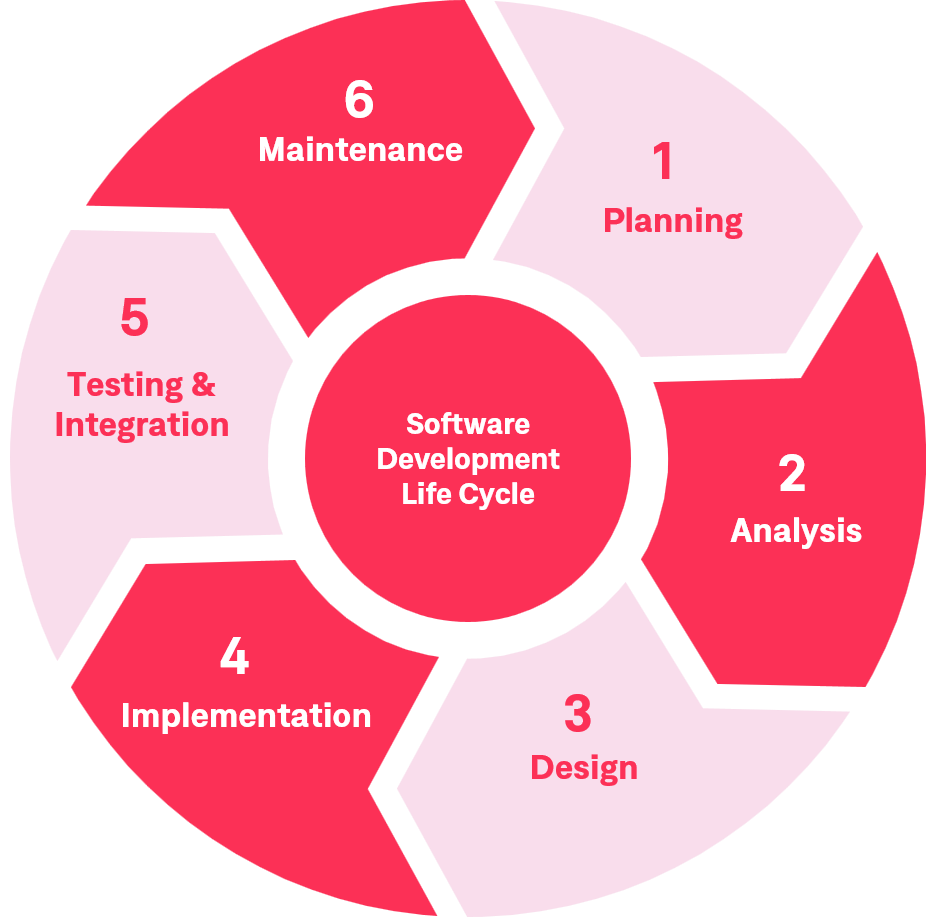
Requirements Analysis and Planning
The very first step in the software development process – in this stage, the software requirements are gathered and analyzed. This includes identifying the features that the software should have and understanding the business needs that it needs to meet.
This may also involve interviews with stakeholders, reviewing old documentation or data, and other research. Once all requirements are gathered, they need to be prioritized and turned into a project plan.
Design
After the requirements are understood and documented, the design of the software begins. This includes creating a blueprint for how the software will work and designing all of the screens and user interfaces.
This stage can also involve prototyping to get feedback from stakeholders and users. The design is then finalized and turned into code.
Development/ Implementation
Once the design is complete, it’s time to start coding! The development phase is where the software is built.
This involves writing all of the code needed and unit testing it. In some cases, this may also include creating or updating documentation, such as end-user manuals.
The development phase is often where the bulk of the work occurs. It’s also often subdivided into smaller phases or iterations, known as sprints in Agile software development processes.
Testing
Once the software has been developed, it needs to be tested. This is done to ensure that all requirements are met and that there are no bugs or issues with the software.
The types of testing include unit testing, integration testing, system testing, and user acceptance testing (UAT). During UAT, stakeholders and end-users are allowed to test out the software.
Deployment
Once the software has been tested and is ready for release, it’s time to deploy it! This involves putting the software into production and making it available to users.
It may also involve setting up or updating any databases or other systems that the software relies on. The deployment phase can also include creating training materials and documentation for users.
Maintenance
Once the software is released, it’s not done! The maintenance phase includes fixing any bugs that are found and adding new features and functionality.
The maintenance phase can last for years, depending on the complexity of the software and how often it’s used.
This can include writing new code or updating existing code to fix these issues and updating documentation and training materials as needed.
Approaches to Software Development Process
The Software Development Approaches demonstrate how to organize software development activities. The waterfall, iterative, spiral, and agile are the most common approaches or models used in software development.
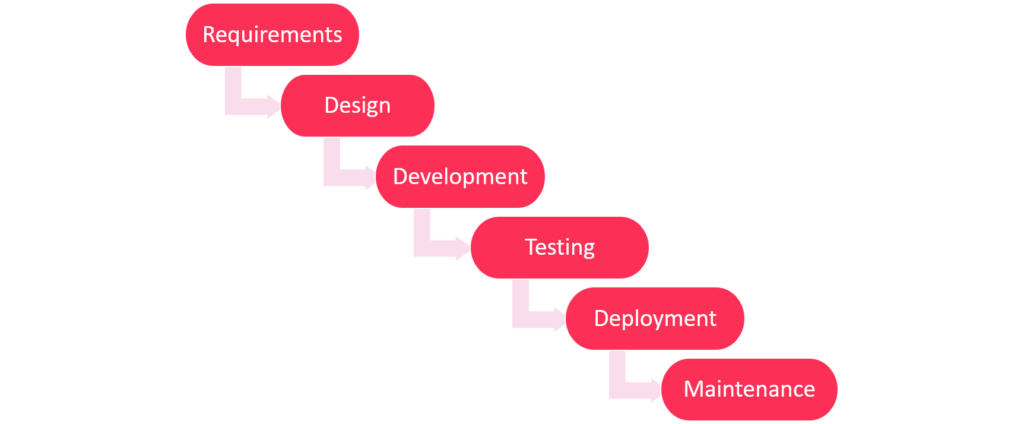
Waterfall Model
A waterfall model is a sequential approach in which each step must be completed before moving on to the next step. It is also known as a linear-sequential life cycle model.
It is different from other software development models because it proceeds in phases. The outcome of one step becomes the input for the next phase in sequence with some slight overlap but little or no iteration between them.
A system is designed and developed, and tested for future delivery after the requirements are established and defined. For high-priority systems with constant needs, a document-driven method works best.
The waterfall model is not used as often today because it can be inflexible and not allow for changes or updates. However, it is still a popular approach for developing desktop applications.
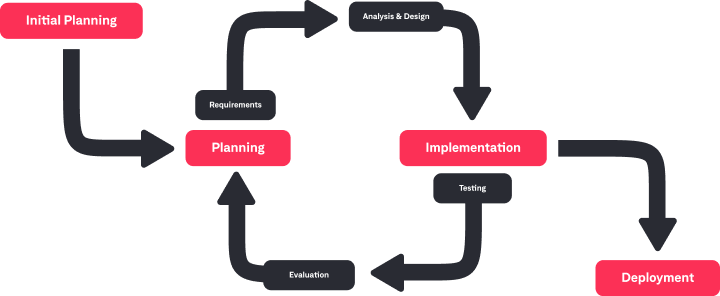
Iterative Model
An iterative model is an incremental, cyclical software development process in which the project is divided into smaller iterations or cycles. Each iteration is typically completed in a shorter time, such as two to four weeks.
After each iteration, the team assesses what was accomplished and determines what additional work needs to be completed in the following one. This allows for continual feedback on performance and modifications as required.
The iterative model is popular because it allows for flexibility and can be adapted to changes. It is often used for time-sensitive software development projects or have changing requirements.
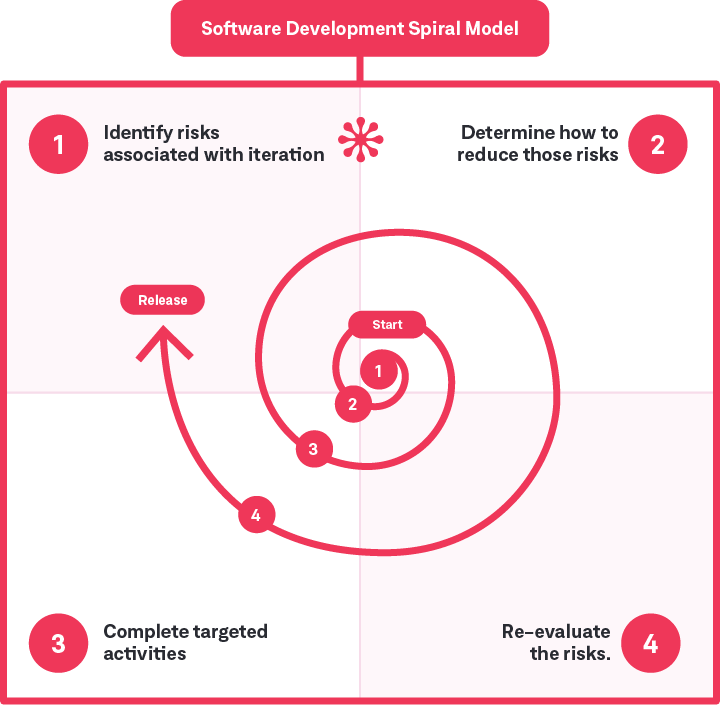
Spiral Model
A spiral model is a risk-based approach that uses a series of spirals, or loops, to manage risks. It is similar to the iterative model in that it also uses smaller cycles. Still, the difference is that it focuses on risk management instead of creating an entire product at once.
Each spiral represents a phase in the project, and each phase includes four steps: identify risks associated with this iteration; determine how to reduce those risks; complete targeted activities (such as design or testing) based on what was learned from previous iterations and re-evaluate the risks.
The spiral model is popular because it helps manage risk and allows for changes. It is often used in complex software development projects.
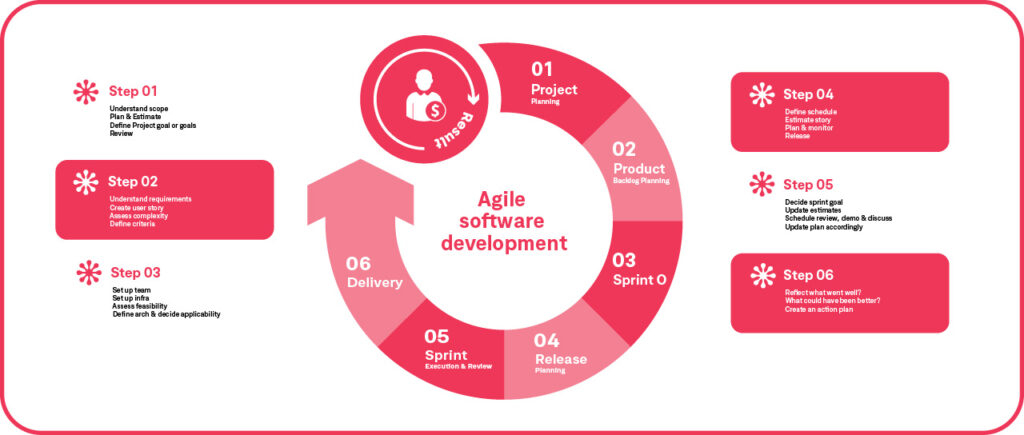
Agile
Agile software development process is a collection of software development approaches in which solutions emerge from cooperation among cross-functional and self-organizing teams.
It supports evolutionary development, adaptive planning, continual improvement, early delivery, and quick and flexible change response.
The agile methodology is different from other software development methodologies because it focuses on the delivery of working software. This means that it is more concerned with the actual product and less about documentation.
Scrum is a framework for agile software development that allows for changes and updates. It is popular because it allows the team to be flexible and respond quickly to changes in requirements.
It uses short iterations, or sprints, which are typically two weeks long. At the end of every sprint, the team assesses what was accomplished and determines what additional work needs to be completed in the following one.
Scrum allows for continual feedback on performance and modifications as required, which makes it ideal for time-sensitive software development projects or have changing requirements.
Conclusion
Software Development Processes must be understood in order to build software that works properly and meets the users’ need.The waterfall, iterative, and spiral models are the most common approaches used in software development.
Other software development models include the Rapid Application Development (RAD) model, Prototyping model and V-shaped model.
While each model has its benefits and drawbacks, they all serve an essential purpose in the software development process.
At Net Group, we are committed to delivering high-quality services and providing value with all projects so that our clients get the most acceptable possible product. Our staff has experience working with various approaches and can adjust to change quickly and efficiently. Read more from out product development services page.
If you are interested in learning more about our software development process, don’t hesitate to contact us today. We would be happy to discuss our approach with you and answer any questions.
Similar insights

Smart Workflows: AI Tools and Tips for Busy Leaders
16/12/2025
Supply Chain Attacks: Rethinking Third-Party Trust
10/12/2025
Choosing the Right Tech Stack in Uncertain Times
25/11/2025
How to Pitch and Get Your Ideas Approved at Work
12/11/2025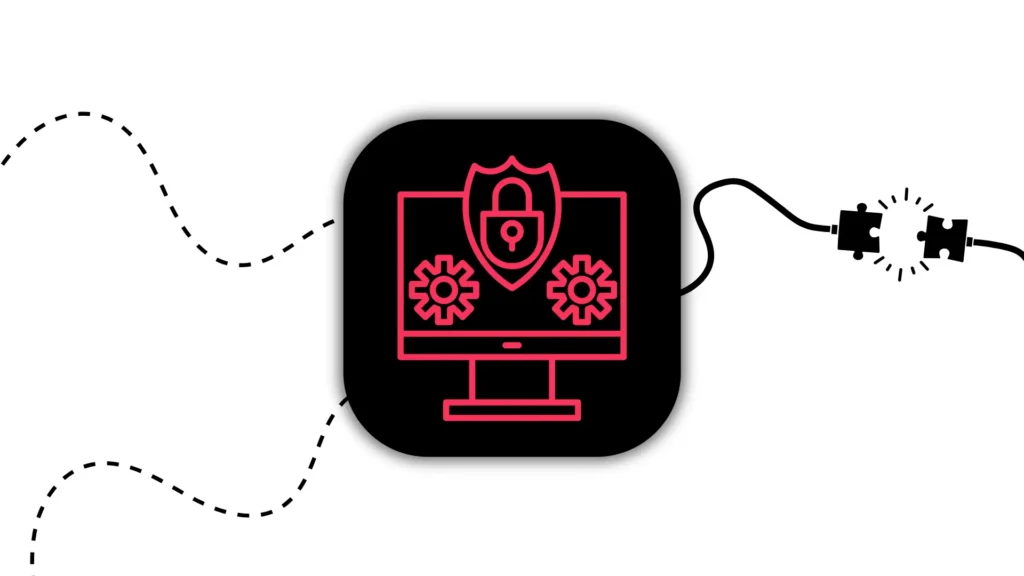
12 AI Cyberattacks That Made CEOs Very Cautious
21/10/2025
14 Books Smart Tech Leaders Are Reading This Fall
07/10/2025
Protect Your Crown Jewels: The Heart of Your Cybersecurity
15/09/2025
How Renown Business Executives are Using AI?
12/08/2025
Think You’re Secure? PEN Testing Will Tell You
15/05/2025
Let the success
journey begin
Our goal is to help take your organization to new heights of success through innovative digital solutions. Let us work together to turn your dreams into reality.